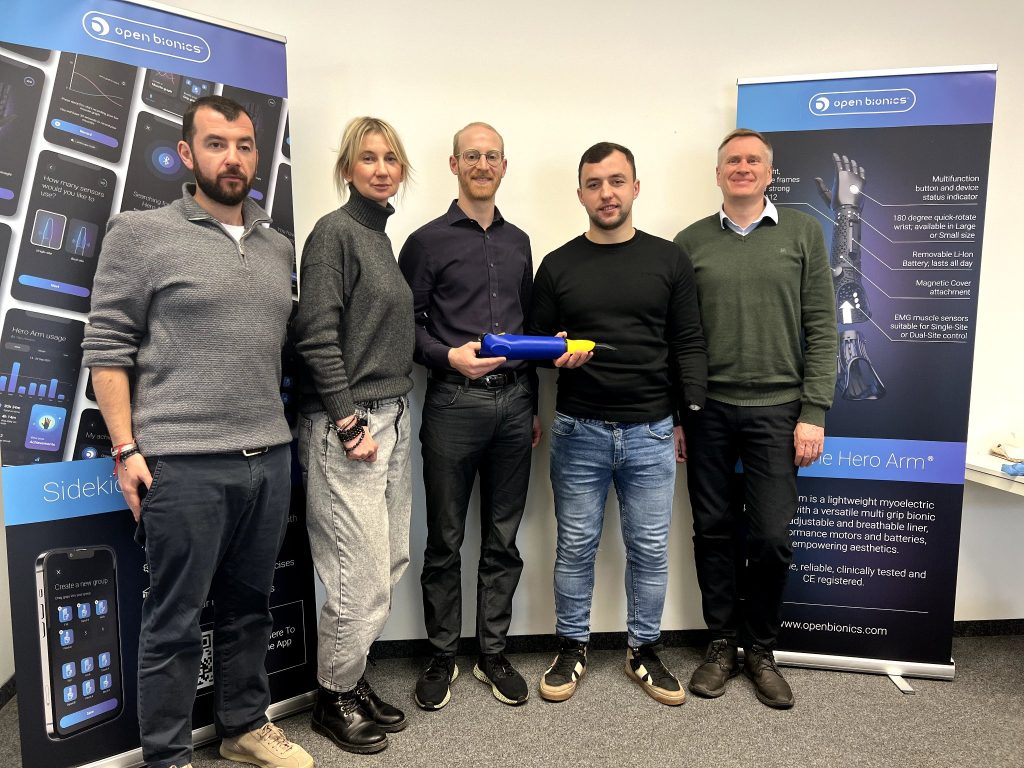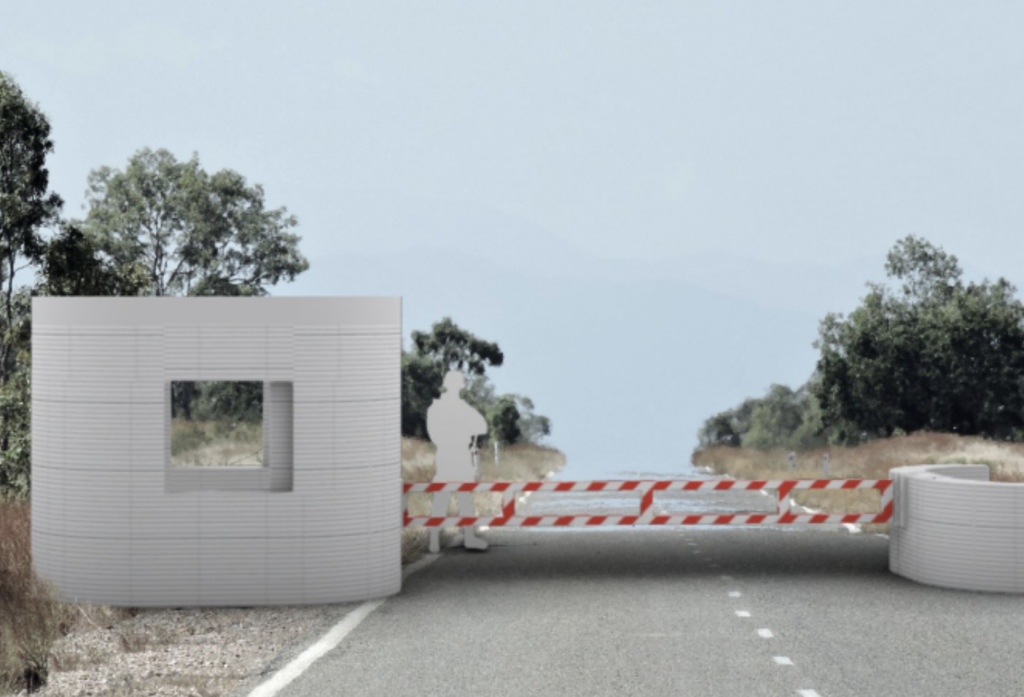Prosthetic 3D printing specialist Open Bionics has delivered bionic arms to a facility in Germany where injured Ukrainian soldiers are being treated for landmine injuries.
Controlled by sensors activated in the forearm, the firm’s Hero Arm features a moveable thumb and fingers that enable users to grasp objects more effectively than traditional prosthetics allow. Having recently been fitted with Open Bionics’ device, Vitalii Ivashchuk, one of those being treated, says he already has a “very cool feeling” with it, and has expressed his gratitude for its daily functionality.
“I cannot describe it. I am pleased that I have such an opportunity to get such a functional prosthesis,” Ivashchuk told forces.net. “I did not even hope for it. When the electrodes were applied and I had the opportunity to test this prosthesis, I just enjoyed it. I was pleased, to put it mildly.”

Open Bionics’ humanitarian mission
Since Joel Gibbard founded Open Bionics with Samantha Payne in 2014, the firm’s prosthetic 3D printing efforts have gone from strength to strength. The Bristol-based business, which has previously been recognized with gongs such as the James Dyson Engineering Award, owes much of its success to its proprietary Hero Arm.
Designed to be both robust and inuitive to use, the Hero Arm is marketed as the “world’s most affordable multi-grip prosthetic arm,” with multi-grip functionality and “empowering aesthetics.” Although engineered and manufactured in the UK, the lightweight, affordable, and customizable myoelectric prosthesis, is now available to amputee adults and children in over 800 locations around the world.
A major driver of the Hero Arm’s appeal has been its acceptance within medical circles, and Open Bionics took part in clinical trials in 2017, which laid the basis for this. In the years since, the company has also leant into popularity-boosting initiatives such as the launch of an official Metal Gear Solid bionic arm, while expanding to address new applications.
In 2020, for instance, a British Army veteran who lost part of his arm in Afghanistan became the first to receive a 3D printed Hero Arm on the NHS. Fitted as part of a clinical trial, set up to assess the feasibility of offering the artificial limbs more widely, the prosthetic restored the use of his hand, after he lost part of his arm to a mortar incident in 2008.
At the time, the soldier Darren ‘Daz’ Fuller, said it was “fantastic to be the first veteran to get a Hero Arm,” but he was hoping to be the first of many. With the news of Open Bionics’ latest initiative, it appears that Daz may now be getting his wish.

A ‘superhuman’ Ukrainian relief effort
Open Bionics became involved in its latest prosthetic 3D printing initiative when it was contacted about the injuries suffered by Ivashchuk and his compatriot Andrii Gidzun. Both were hurt in mine explosions that caused injuries to their hands, which ultimately led to amputations. In response, Gibbard and his team have flown to Germany, where they’ve helped local medical staff fit the pair with bionic hands.
However, the project hasn’t been set up in isolation, and is actually being organized by the charitable foundation Superhumans. Backed by Mastercard, the organization aims to raise £33 million towards the building of a specialist hospital in Lviv, Ukraine, where those who have lost limbs as a result of Russia’s full-scale invasion of the country last year, can be treated.
With a reported 82,000 sq. kilometers of Ukrainian territory now covered with landmines, it’s thought the number of people affected by such injuries is only likely to rise further. As such, the Superhuman foundation is now working with Ukraine’s Ministry of Health and Open Bionics to expand its prosthetic, rehabilitation, and counselling services, so that it better meet the needs of the country’s citizens.
“The philosophy of Superhumans is that our patients receive the best medical service at home, next to their families, in their own language,” added Superhumans CEO Olga Rudneva. “Once the Superhumans Centre opens, it will take up to 3,000 patients each year. All services will be free for patients thanks to partners and donors.”

3D printing in aid of Ukraine
Ever since Russia’s invasion of Ukraine, 3D printing firms have sought to lend their support to the country in any way they can. Immediately after the war began, Sygnis and 3YOURMIND launched the ‘Tech Against Tanks’ initiative to aid the production and distribution of 3D printed medical, tactical, and protective equipment.
Elsewhere, the 3D printing industry shut out Russian firms, with the likes of EOS, 3D Systems, HP, and more, taking a stand over Russia’s invasion. In fact, Zortrax even broke off negotiations with a Russian investor shortly after the war started in earnest.
In construction, firms such as ICE Industrial Services have already committed to rebuilding Ukraine with 3D printing, despite the war continuing to rage. Speaking to 3D Printing Industry last year, CEO Tomáš Vránek revealed that his company intends to deploy the technology to rebuild military barriers at checkpoints across the country.
To stay up to date with the latest 3D printing news, don’t forget to subscribe to the 3D Printing Industry newsletter or follow us on Twitter or liking our page on Facebook.
While you’re here, why not subscribe to our Youtube channel? featuring discussion, debriefs, video shorts and webinar replays.
Are you looking for a job in the additive manufacturing industry? Visit 3D Printing Jobs for a selection of roles in the industry.
Featured image shows a Ukrainian soldier Vitalii Ivashchuk with his 3D printed arm. Photo via Melinda Haring, the Superhumans Centre.



